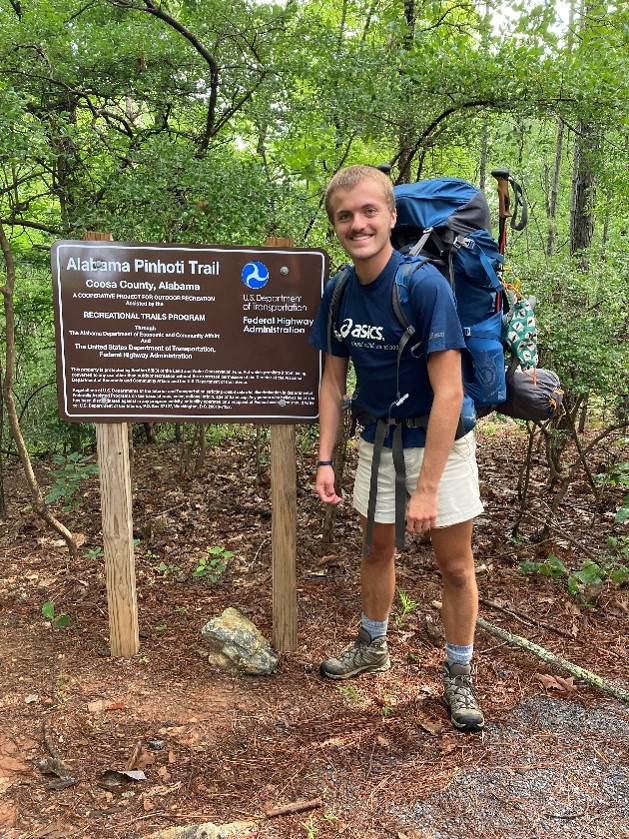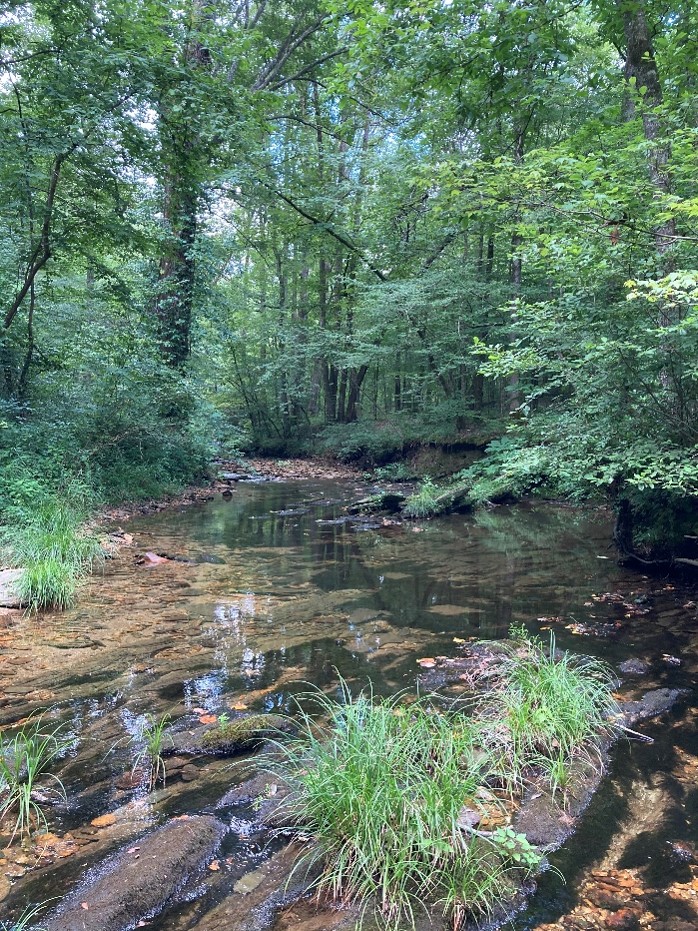Filters in the Forest

Fully stocked on water, beginning the trek.
Written by Philip ‘Henry’ Pitts, Guild student member, University of Alabama
The lake emerged from behind the asphalt as if it were an oasis, a shimmering blue pool amongst shining SUVs, inviting me to replenish my dry Nalgenes and take refuge on its shores from the scorching Alabama sun. It was July of 2020 and I was attempting a through-hike of the Pinhoti, which stretches through the Talladega National Forest to join the southern terminus of the great Appalachian trail in Georgia. I was two days into the journey, having spent the first night caught in a rainstorm, and the second day marching along 11 miles of boiling rural highway, warding off country dogs and rattlesnakes with my trekking poles. Joy Lake, a manmade lake centering a small subdivision on the outskirts Sylacauga, had been my aim all day, with the trusty trail guide announcing in all caps that after this urban watering place there were “NO RELIABLE WATER SOURCES FOR 15.5 MILES !!” Despite this dire warning after one look at the water, I decided I’d rather take my chances with any intermittent streams that might have sprung up after the previous day’s showers once I was back in the forest. The concrete jungle that drained the surrounding area of the lake accumulated enough litter, oil slicks, and high levels of suspended sediments that I found myself longing for the restorative filtering efforts of forest litter and soils.

My favorite stream along the trail.
Effective forest management should address and prioritize the continued protection of riparian zones, as these areas provide invaluable habitat for endangered species, mitigate the effects of flooding, efficiently drain the catchment system, and filter any water in situ. Luckily for me Talladega National Forest benefits from effective management as I was able to find shallow, yet clear and seemingly clean water to stock up on for the blistering days ahead, despite extremely dry conditions prior to the rainfall event. Though my research interests during term time typically aligned more with water policy and water governance on a larger scale, my time on the Pinhoti fostered a newfound appreciation for the essential role of forests in water management.
